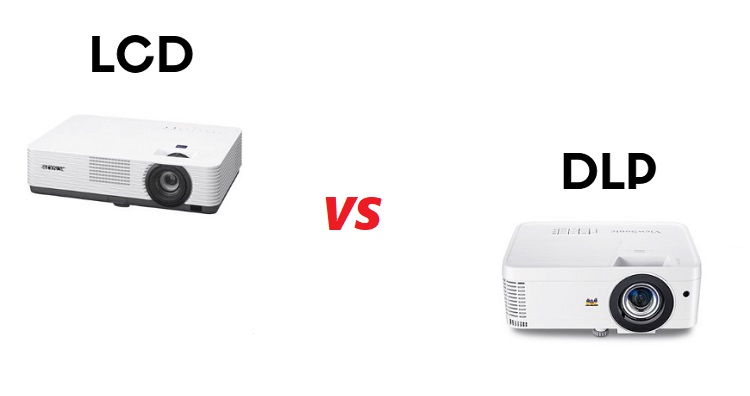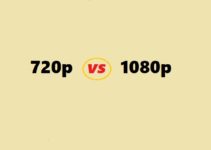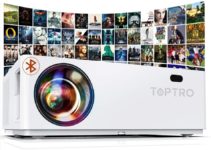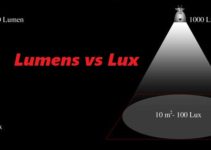- 3LCD versus DLP
- DLP projector technology
- Advantages of DLP technology
- 3LCD Projector technology
- Advantages of 3LCD technology
- Compare DLP projector vs LCD projector
- What Is Better DLP Or LCD
- Should You Choose Lcd Vs Dlp Projectors For Home Theater?
- LED technology
- Conclusion
3LCD versus DLP

DLP vs 3lcd are the 2 most advanced image creation technologies available today, but you also know that nothing is perfect. So not every technology can meet the best presentation needs. Because both these technologies have their advantages and disadvantages. To be able to clarify the difference between LCD and 3lcd projector, let’s go to clarify the characteristics of each type.
DLP projector technology
DLP is called digital display technology because, in contrast to LCD technology, this technology uses thousands of very small micro-mirrors to reflect light.
This technology uses an optical semiconductor circuit called a “Digital Micromirror Device” to be able to reconstruct the data source. DLP technology will use a DMD chip with each chip integrated with thousands of micro-mirrors, on each micro-mirror is a pixel that is oscillating at high speed thousands of times/s. Along with that is to use the 4-color wheel to be able to create monochromatic colors.
DLP chips work a lot differently than the three technologies LCos, LCD, and LED. It has the important function of minimizing the distance between pixels (or otherwise known as pixels) to create a seamless image before being projected onto the screen. A DLC chip operates in two states, either on or off.
It’s small mirrors (maybe tens, hundreds of millions. About 2 mirrors at 1080p resolution is 1920×1080) when incident light it will reflect and bounce off the lens.
DLP projectors have 2 types, divided by chip design including the single chip (cheap type) and 3-chip design (like two technologies 3LCD and LCos, expensive type).
DLP technology usually provides high contrast for a good performance suitable for home entertainment or cafe, restaurant, office projector, a large auditorium, and digital cinema as well as projectors. portable mat, etc. Due to the faster DLP chip, it is considered the standard for large screen projection with a great experience, especially the 3-chip DLP system.
Advantages of DLP technology
Clear image
Due to the technology that uses millions of tiny mirrors to reflect colors, videos and graphics are sharper. The mirrors are spaced less than a micron apart, which means that the distance between the pixels is also closer and therefore images and videos are also much smoother and better quality.
Most DLP projectors are designed with a sealed lens so it is more suitable for dusty environments without affecting the quality of the projected content.
High resolution
DLP projectors provide higher resolution than other technology projectors. This makes the experience more complete, the images and videos displayed are also of superior quality, especially in entertainment needs. With a 1080p DLP projector, you can experience the best DHTV programming, Blu-ray discs, digital players, or video games available.
Colorful
The next advantage of a DLP projector is the possession of a sophisticated color wheel. DLPs maintain color accuracy because they simply reflect light onto the screen, resulting in sharp, clear, and vibrant images.
Since there is no color decay with heavy use, your DLP projector should be able to last for many years.
The dark part will be deeper, the white part will be brighter and clearer
DLP projectors provide users with clear images due to high black and white contrast. Most DLP projectors have a higher contrast ratio of 2000:1, compared to most LCD projectors. Because of the high contrast, the darker parts will be deeper and the whiter parts will be more obvious. This means it’s suitable for projecting important text in presentations in rooms with ambient light.
Convenient mobility and connectivity
Small, compact, and portable are the advantages of a DLP projector because it has only a single chip. The weight of DLP technology projectors usually ranges from 2-3 kg, which is very suitable for traveling, working away, or moving in a small room.
Projector technology 3LCD
This is a technology that integrates 3 processing chips with the basic colors of red green and blue on the same projector. This technology can be used to use 3 panels, so the LCD is in the center of the system, so this technology is called 3LCD. Each LCD panel will have hundreds of thousands of very small pixels, the more pixels, the higher the resolution.
The light source will be focused on through a dichroic prism. At this time, the light source containing enough colors is passed through the lens and projected onto the projection screen. That is 3LCD technology you can understand more easily when looking at the simulation image.
Advantages of 3LCD technology
Sharp image
3LCD technology delivers sharper and brighter images with high grayscale details.
3LCD effectively uses projection light to hit the screen without color discontinuity
3LCD projection technology consumes more power
1-chip DLP projectors utilize a shading wheel, which has a wasteful plan that causes loss of light. 3LCD did not depend on a shading wheel.
3LCD projection innovation utilizes light productively to make shocking pictures. Contrasted with 1-chip DLP innovation, 3LCD burns-through 25% less force per lumen of splendor.
Light has the large model of the normal show
These days with the high speed of imaging technology, users ask projectors to produce videos, images, and bright colors.
The output color light intensity is a good indicator for this problem, one of the top criteria when choosing to buy a projector.
The intensity light color output is a unit that represents the color of the projector. Similar light color measurement mode as white luminance measurement (White light output). Color Light Output provides a simple and accurate way to evaluate a projector’s color projection capabilities.
Projector brightness
According to market research results of leading projector companies in the world, image display quality is a very important factor when choosing to buy a projector for the majority of customers. That speaks to the importance of the output color light intensity, which is also an indicator that gives users a quick and accurate assessment of the color image presentation quality of the projector they decide to buy.
With the fast-paced development of high definition, video content presented in rich color, the quality and impact of the color presented by a projector becomes extremely important. Until now, there was no way for buyers and users to determine if their projector was capable of presenting colorful and vibrant images. Color brightness helps to solve this problem.
Color brightness is a new standard that gives buyers the data they need to compare projectors. Brightness is a specification that has long been used to compare projectors; However, the old specification is only white brightness. Most projectors today are color projectors, and measuring white brightness alone is not enough. Color brightness provides projector buyers with the essential data they are still missing.
Built-in 3LCD projector for true-to-life images
All projectors with this technology use 3 chips with a monolithic optical design that process 3 color channels and create vivid and beautiful images from every angle, with continuous colors without breakage, color (rainbow phenomenon) like DLP projection technology. Bright and true colors bring the best user experience.
3LCD technology is efficient in power consumption
This technology consumes electricity very intelligently. Compared to 1-chip DLP technology, 3LCD consumes 25% less power per lumen of brightness. 1-chip DLP projectors use a color wheel, which has an inefficient design that causes loss of light. 3LCD is not based on a color wheel so it is more power efficient.
Compare DLP projector vs LCD projector
Take a look at our summary table comparing these two technologies:
| Criteria: | DLP technology | LCD Technology |
| Image quality | Images are usually brighter thanks to the high contrast. | The displayed image is often more natural and realistic. |
| Uses | Use for entertainment, watching movies and football more. | Used to present office, meeting room, teaching more. |
| Advantages | – Smoother video image – Higher Contrast – Compact structure for easy portability |
– Brighter picture than DLP with same wattage bulb – For sharper images, smoother color transitions than DLP – Less power consumption than DLP |
| Defect | – Lower saturation affects image data – Rainbow effect occurs (light streaks appear) – The “stray” effect of light (a gray band around the edge of the image) |
– Sometimes a checkered effect occurs – Larger structure – May get dead spots – LCD panels are expensive, if damaged, the replacement cost is high. Whereas DLP chips rarely fail |
Currently, both LCD and DLP technologies are constantly being upgraded to produce quality images at low prices to better serve the needs of users. Although the two technologies have their advantages and disadvantages, the difference will not be much in the next year. So which technology you choose to use completely depends on your economy and needs.
What Is Better DLP Or LCD
Projectors using 3LCD technology will give brighter and sharper images, so they are very suitable for the needs of office meetings or school teaching, etc. Projectors using DLP technology will bring quality Video image quality is better, so it will be more suitable for entertainment needs, movies, sports presentations.
However, now 3LCD projectors can play movies smoothly. The same DLP projectors are good for classroom teaching or office meeting needs. So you should not worry too much about which technology projectors should pay attention to your projection, space, and economic needs to be able to choose LCD or DLP projector?
Should You Choose Lcd Vs Dlp Projectors For Home Theater?
If projectors are expensive, then DLP and 3LCD will differ a bit in practice, as manufacturers have taken care to keep the shortfall as low as possible. In the cheaper category, the disadvantages are more obvious.
DLP lights can display a more accurate black and white image, while other colors will be dull. In turn, 3LCD will transmit more accurate images at significantly higher brightness levels. However, DLP can have higher contrast, meaning that blacks will be much deeper, but images can be blurred due to insufficient rotation of the color wheel (known as the rainbow effect).
Due to the placement of the micromirrors, projectors using 3LCD technology are susceptible to the so-called mosquito net effect when the image has noticeably dark squares, and as such, they are often tri-color. In some cases, the color mixing will not be perfect, because the edges are blurred and appear as steps.
DLP projectors usually have a sealed optical element, which prevents dust from getting inside. But everything is not so obvious, moreover, the remaining elements should be cleaned from dust.
LED technology
Lamps are a time-tested source of radiation. Usually, they give white, with the help of color filters turning into other colors. On the advantages, i can note a rather low cost, as well as ease of replacement – the procedure can be performed independently.
If i talk about flaws, then the life of the lamps on average is about 2-3 thousand hours in low-cost models, during operation they heat up significantly, which forces the cooler to work hard, thereby creating noise when operating.
Real, modern lamps can work for 5 minutes 6 thousand hours, and in some cases up to 10, even 20 and 30. LEDs and lasers are significantly more expensive but at the same time compact and energy efficient. much more quantity.
They convey very accurate, rich, and vivid colors, especially inexpensive models. In addition to cost, a major drawback is the inability to self-replace in the event of breakage.
Conclusion
Although there are two advanced imaging methods today, there is no single technology that is so omnipotent that it can well meet all the needs of work and entertainment, because both have their advantages and disadvantages. In short, each imaging technology used in projectors has its pros and cons. Depending on your pocket, needs, and preferences, you can choose the right technology for you. So should i buy an LCD or DLP projector? With the above detailed analysis, i believe you have found your answer!






